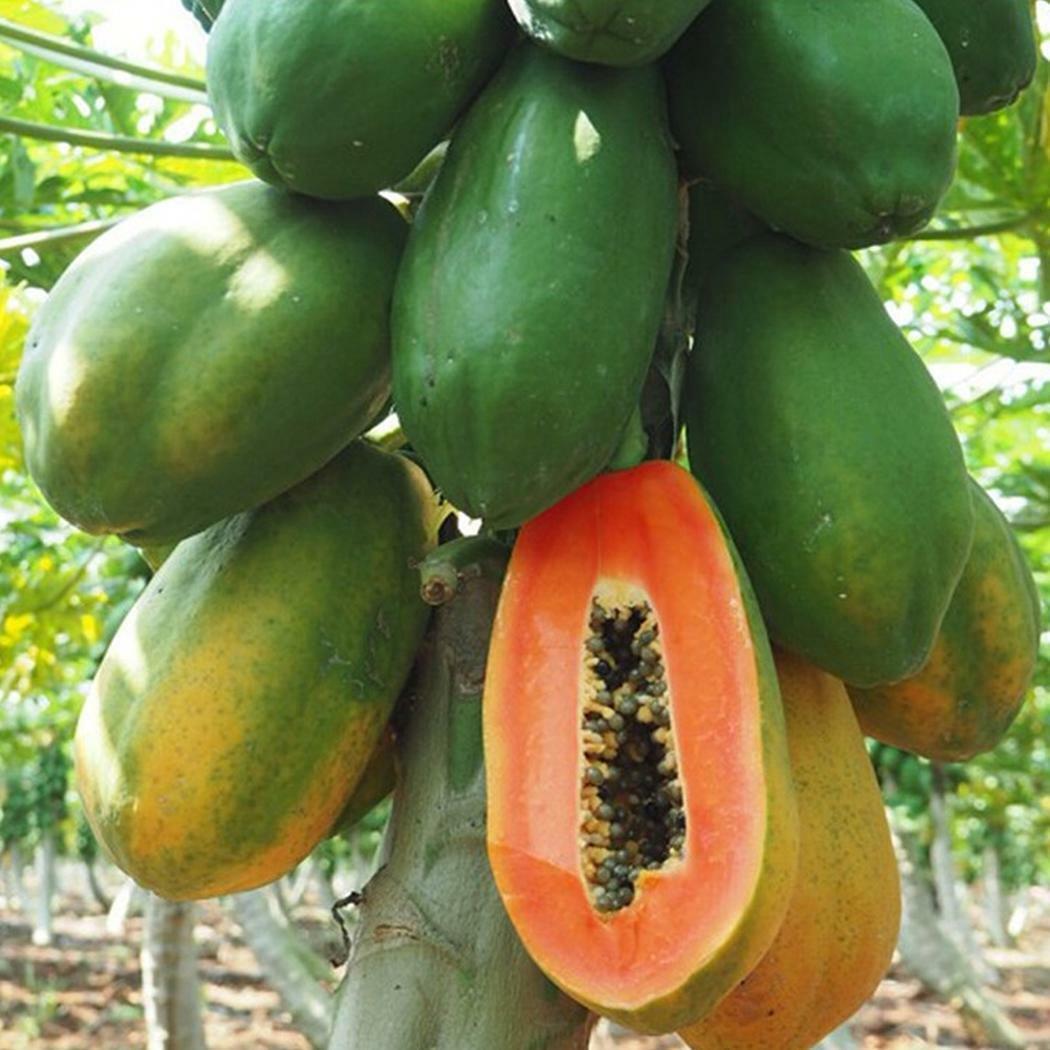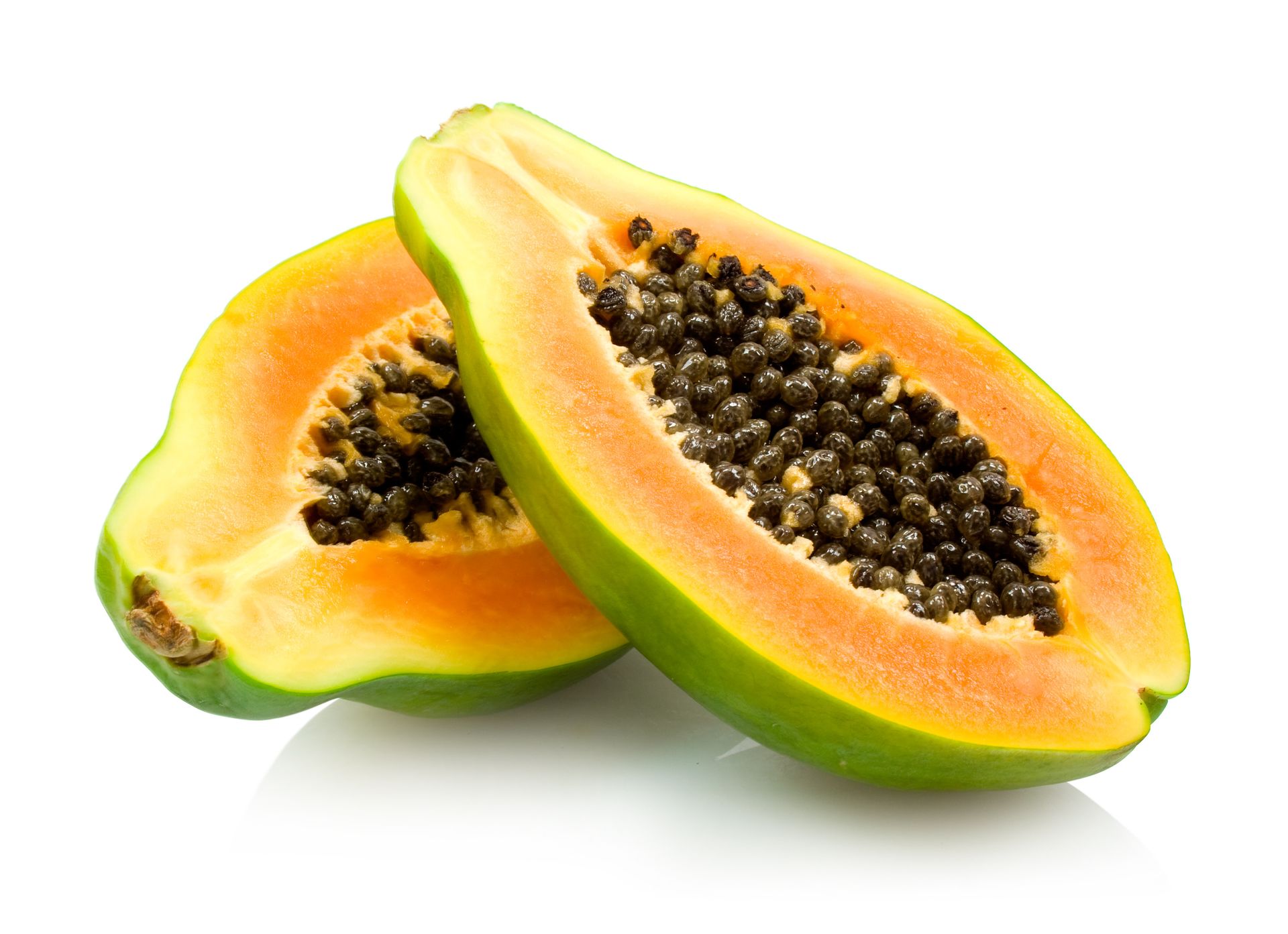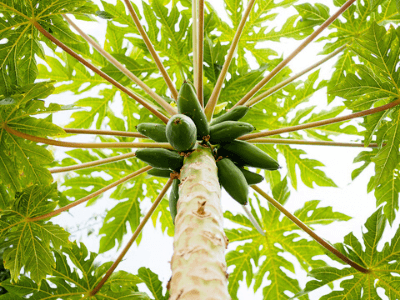Description
The Papaya Tree is actually a large herbacious tropical plant suitable for growing in-ground within USDA Zones 9 to 11, or in a large container in Zones 4 to 11. Papaya Trees have many uses, but their main crop is the large, melon-like fruit produced in large quantities on mature trees. Papaya Trees grow quickly and add an exotic tropical look to the landscape. Their leaves are used to make tea, and the fiberous trunks and leaf stems are used for mulch, compost, and even kindling.
Female Papaya Trees produce clusters of oval, green fruit that cling to the trunk at the top just under and among the growing crown of leaves. Ripe fruits turn yellow and orange, and are filled with viable seeds that can be planted for everlasting crops. The self-pollinating trees are naturally resistant to many pests, and they can grow in many types of soil. They like full sun, deep watering, well-drained ground, and mulched soil with plenty of organic matter to fuel their growth. Adding a Papaya Tree to your edible landscape gives you both the look and the taste of the tropics.
Papaya Tree Care
Papaya Trees are easy to grow and they respond well to both organic feeding and fertilizers. Much like a banana, there is no end to the organic material you can add to the soil and help your Papaya Trees to thrive. Compost organic kitchen waste directly under growing Papaya Trees. Mulch with grass clippings, leaves, and tree bark. You can also add fruit tree fertilizer or compost to the soil around your Papaya Trees at any time. The more you feed these fast growers, the more leaves and fruit they will produce.
Plant new Papaya Trees in full sun, or a spot that gets at least 6 hours of direct sun per day. The trees benefit from protection against strong winds, and a planting location to the south of an established hedge of tall plants, or a building is good for Papayas. Dry the seeds from ripe fruit and start in pots in spring. Plant new plants after all chance of frost, and water once per week for the first three months. You can also grow Papaya Trees in pots as long as the pots drain well and you give the plants as much sunlight as possible.
Papaya Tree Fruit and Harvesting
Papaya Trees grow quickly and a new tree can produce fruit within its first year in the ground or a large container. New fruit appear at the crown of the tree and will be small and green at first. The fruits increase in size over a month or two and mature Papayas range in size from 6 to 18 inches long and can weigh as much as 4 pounds or more. Pick fruit when it begins to turn yellow and allow it to ripen indoors. Papayas can also be picked and eaten when green. Ripe Papayas are eaten fresh, used in fruit salads, or frozen then added to smoothies. Green Papayas are used in green Papaya salad, or marinated in vinegar and eaten as a side dish.
Papaya Trees also have other uses in addition to their tropical fruit. Papaya Tree leaves can be dried and made into tea, which is said to aid in digestion. Fresh Papaya Tree leaves are used to wrap meat and act as a natural meat tenderizer. Papaya seeds can be dried and ground as a spice that is similar to black pepper, only hotter. All parts of the Papaya Tree can be used to make mulch or chopped and added to compost. Finally, the dried leaf stems burn easily, and can be used as kindling fuel to start camp or cook fires.
Advice
Some Papaya Trees have been reported to live up to 20 years, but this is rare. Papaya Trees are very fast growers, but individual trees are not usually long-lived. A single Papaya Tree can grow and produce fruit for up to three or four years, but one tree will not live for decades like a hardwood or stonefruit tree. This is not a problem since Papaya Trees grow so easily from seeds and the new trees grow so quickly. As a Papaya Tree gets older, the crown of leaves and fruit will naturally grow smaller and smaller. This is a normal process and no amount of extra fertilizer or water will stop it.
When one of your Papaya Trees begins to show diminished growth at the crown, usually after about four years or so, simply cut the tree down at the base and compost the plant material. Papaya Tree trunkls are hollow and made up of coarse fibers. A fully grown Papaya Tree can be cut down and chopped up with a sharp, sturdy machette. Always use caution when using sharp gardening tools, and be mindful of the surrounding area when cutting down taller plants.






What others are saying
There are no contributions yet.